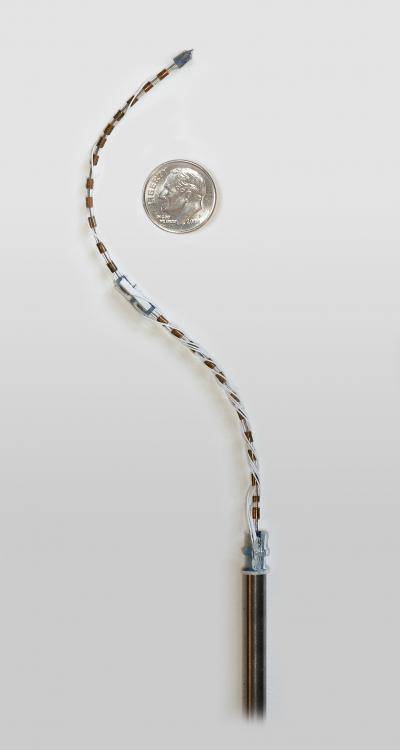 ... and according to this press release, this one deflects in a very cool way (video here):
... and according to this press release, this one deflects in a very cool way (video here):Existing commercial catheters are manually controlled and can only move in two directions. These catheters require doctors to painstakingly manipulate the catheter to control exactly where each individual lesion should be applied.A few words of caution about this press release. First, to my knowledge this catheter has not been commercially developed nor tested in humans.
But the robotic catheter developed by Buckner's team significantly reduce operating times, utilizing "smart materials" to provide significantly better maneuverability. The smart materials act as internal muscles, contracting when an electric current is applied. This allows the catheter to bend left, right, up, down or any combination of those directions. Furthermore, doctors can use a specialized joystick to locate key points on the atrium. A computer program can then trace a curve along those points – essentially connecting the dots – creating a solid line of scar tissue that will block the electric signals causing fibrillation.
Second, I find catheter manipulation is not "painstaking" but fun (just me, I guess). Further, moving catheters to a location in the heart is the relatively easy part during catheter ablation - holding it at a location and applying an appropriate amount of pressure to the heart so that energy can be applied safely without perforating the heart are even more important engineering prerequisites for any of these robotic catheters to be adopted clinically.
Still, the prototype's flexibility and mobility are impressive and sure would make for some exciting entertainment possibilities
-Wes
Reference: Press release from North Carolina State University
No comments:
Post a Comment
Note: Only a member of this blog may post a comment.